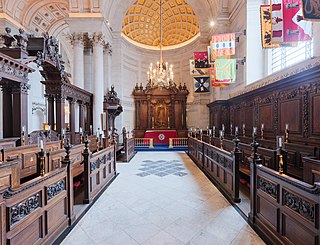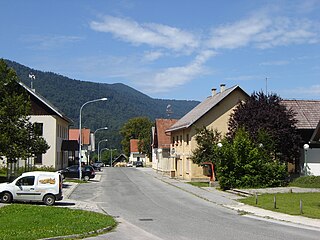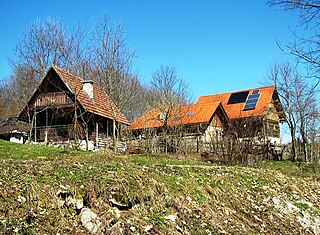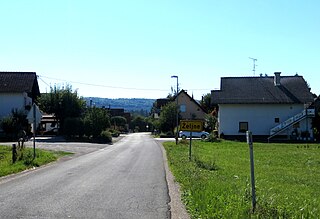| Rajndol | |
|---|---|
| Coordinates: 45°34′4.11″N14°56′50.83″E / 45.5678083°N 14.9474528°E Coordinates: 45°34′4.11″N14°56′50.83″E / 45.5678083°N 14.9474528°E | |
| Country | |
| Traditional region | Lower Carniola |
| Statistical region | Southeast Slovenia |
| Municipality | Kočevje |
| Area | |
| • Total | 5.27 km2 (2.03 sq mi) |
| Elevation | 509.9 m (1,672.9 ft) |
| Population (2002) | |
| • Total | 45 |
| [1] | |
Rajndol (pronounced [ˈɾaːi̯ndɔl] ; German : Reinthal [2] or Reintal [3] ) is a small settlement in the Municipality of Kočevje in southern Slovenia. It was inhabited mostly by Gottschee Germans. During the Second World War its original population was expelled. The area is part of the traditional region of Lower Carniola and is now included in the Southeast Slovenia Statistical Region. [4]

German is a West Germanic language that is mainly spoken in Central Europe. It is the most widely spoken and official or co-official language in Germany, Austria, Switzerland, South Tyrol (Italy), the German-speaking Community of Belgium, and Liechtenstein. It is also one of the three official languages of Luxembourg and a co-official language in the Opole Voivodeship in Poland. The languages which are most similar to German are the other members of the West Germanic language branch: Afrikaans, Dutch, English, the Frisian languages, Low German/Low Saxon, Luxembourgish, and Yiddish. There are also strong similarities in vocabulary with Danish, Norwegian and Swedish, although those belong to the North Germanic group. German is the second most widely spoken Germanic language, after English.

The Municipality of Kočevje is a municipality in southern Slovenia. The seat of the municipality is the city of Kočevje. Today it is part of the Southeast Slovenia Statistical Region. In terms of area, it is the largest municipality in Slovenia.

Slovenia, officially the Republic of Slovenia, is a sovereign state located in southern Central Europe at a crossroads of important European cultural and trade routes. It is bordered by Italy to the west, Austria to the north, Hungary to the northeast, Croatia to the southeast, and the Adriatic Sea to the southwest. It covers 20,273 square kilometers (7,827 sq mi) and has a population of 2.07 million. One of the successor states of the former Yugoslavia, Slovenia is a parliamentary republic and a member of the United Nations, of the European Union, and of NATO. The capital and largest city is Ljubljana.
A mid-18th-century chapel in the village was dedicated to Guardian Angels and was demolished in the 1950s along with much of the ecclesiastical heritage of the Kočevje area. [5]

The term chapel usually refers to a Christian place of prayer and worship that is attached to a larger, often nonreligious institution or that is considered an extension of a primary religious institution. It may be part of a larger structure or complex, such as a college, hospital, palace, prison, funeral home, church, synagogue or mosque, located on board a military or commercial ship, or it may be an entirely free-standing building, sometimes with its own grounds. Chapel has also referred to independent or nonconformist places of worship in Great Britain—outside the established church.
A guardian angel is an angel that is assigned to protect and guide a particular person, group, kingdom, or country. Belief in guardian angels can be traced throughout all antiquity.











